Class 8 Light Notes
Class 8 Light Notes
Light:-
Light is a form of energy that produces sensation of vision in our eyes.
Reflection of Light:-
The phenomenon of bouncing back of a ray of light after striking on a highly polished (reflecting) surface is called reflection of light.
Incident ray:- The light ray, which strikes any surface, is called the incident ray.
Reflected ray:- The ray that comes back from the surface after reflection is known as the reflected ray
Angle of incidence (∠i):- The angle between the normal and incident ray is
called the angle of incidence.
Angle of reflection (∠r):- The angle between the normal and the
reflected ray is known as the angle of reflection.
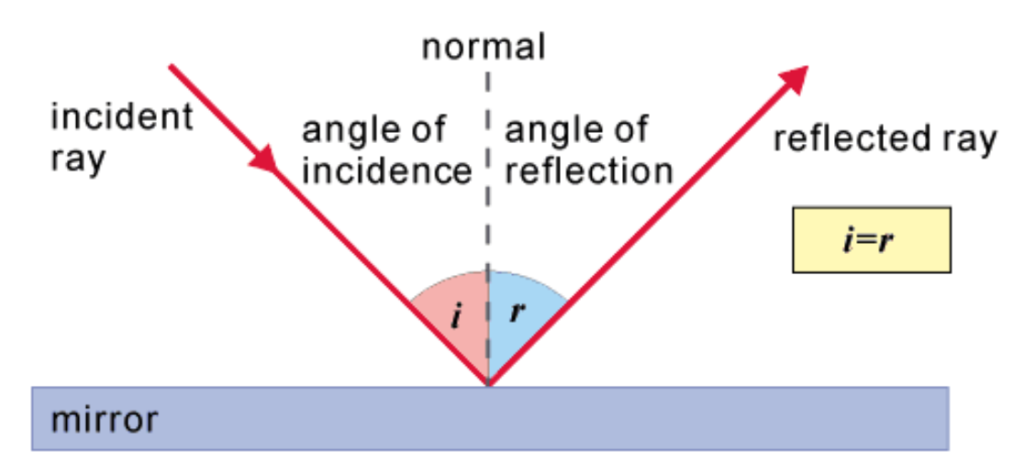
Laws of Reflection:-
- First law:- The angle of incidence is equal to the angle of reflection. i.e., ∠i = ∠r
- Second Law:- The incident ray, the normal at the point of incidence and the reflected ray, all lie in the same plane.
Lateral Inversion:-
The phenomenon of left side appearing right side and right side appearing left side in the image formed by a mirror is called lateral inversion.
Regular Reflection:-
The reflection from a smooth surface such that all the parallel rays reflected are also parallel is called regular reflection.
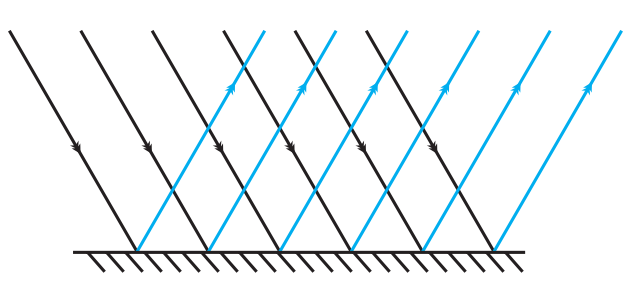
Irregular/Diffused Reflection:-
The reflection from an irregular surface such that all the parallel rays reflected are not parallel is called irregular or diffused reflection.
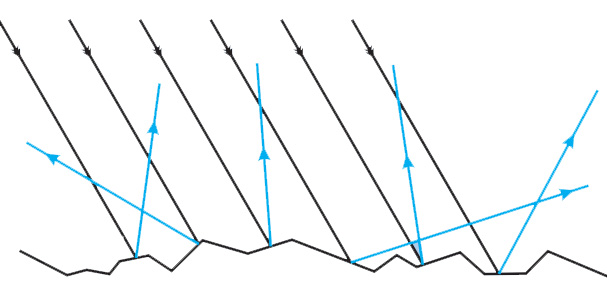
- Images are formed by regular reflection.
- Reflected light can be reflected again.
- The devices based on multiple reflection of light are periscope and kaleidoscope.
- Periscopes are used in submarines, tanks and also by soldiers in bunkers to see things outside.
- Kaleidoscopes are used by designers of wallpapers and fabrics and artists to get ideas for new patterns.
- Sunlight is referred to as white light that consists of seven colours i.e., violet, indigo, blue, green, yellow, orange and red.
Refraction of Light:-
The phenomenon of bending of a ray of light when it passes from one medium to another medium is called refraction of light .
- In going from rarer to denser medium, the ray of light bends towards normal and in going from denser to rarer medium, the ray of light bends away from normal.
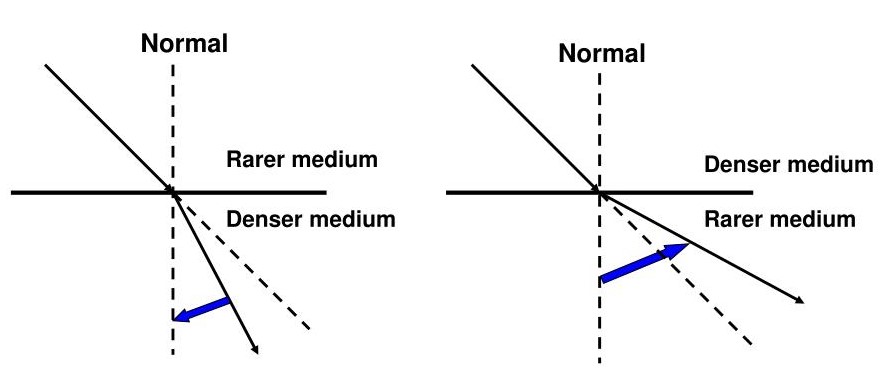
Human Eye:-
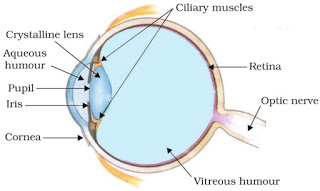
- Human eye ball is approximately spherical in shape with diameter of about 2.3 cm.
- Light enters the eye through a thin membrane called the cornea.
- Iris controls the size of pupil.
- Pupil regulates the amount of light entering the eye.
- Image is formed on retina & its nature is real & inverted.
- The retina has two types of light sensitives cells i.e., rods & cones.
- Rods are responsible for vision at low light.
- Cones are active at higher light levels & is responsible for colour vision.
- Ciliary muscles help to change the focal length of the eye lens.
Blind spot:- The junction of retina and optic nerve where no light sensitive cells are present is called blind spot.
- Vision is not possible at blind spot.
Persistence of vision:- The effect of an image stays on retina for about 1/16 of a second even after the object is removed. This is called persistence of vision.
Care of Eyes:-
Some tips to take care of the eyes are as follows:-
- Do not look at the sun or a powerful light directly.
- If advised, use suitable spectacles.
- Too little or too much light is bad for eyes. Insufficient light causes eyestrain and headaches. Too much light, like that of the sun, a powerful lamp or a laser torch can injure the retina.
- Never rub your eyes. If particles of dust go into your eyes, wash your eyes with clean water. If there is no improvement go to a doctor.
- Wash your eyes frequently with clean water.
- Always read at the normal distance for vision. Do not read by bringing your book too close to your eyes or keeping it too far.


Comments
jRdWhP
There s a big market for prenatal yoga teachers where I live, and I already had two classes lined up before I even took the training cialis online prescription